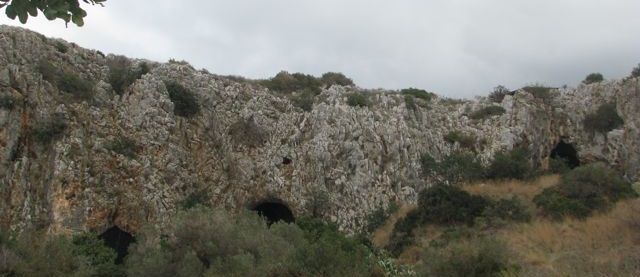Nahal Me’arot Nature Reserve
July 16th 2014
 Also known as the Wadi el-Mughara Caves, The Nahal Me’arot Nature Reserve consists of four caverns believed to have been inhabited by humans for over one million years. The four caves on the nature reserve are known as Me’arat HaTanur (the Oven Cave), Me’arat HaGamal (the Camel Cave), Me’arat HaNahal (the Stream Cave) and Me’arat HaGdi (the Young Goat Cave). A highlight at the nature reserve, Me’arat HaGamal was recognized as a UNESCO World Heritage Site in 2012.
Also known as the Wadi el-Mughara Caves, The Nahal Me’arot Nature Reserve consists of four caverns believed to have been inhabited by humans for over one million years. The four caves on the nature reserve are known as Me’arat HaTanur (the Oven Cave), Me’arat HaGamal (the Camel Cave), Me’arat HaNahal (the Stream Cave) and Me’arat HaGdi (the Young Goat Cave). A highlight at the nature reserve, Me’arat HaGamal was recognized as a UNESCO World Heritage Site in 2012.
During the spring, after the winter rains, wildflowers grow throughout the reserve. Follow the signs on trails to gorgeous vistas from the Carmel Mountains. Before taking off on your hike, stop at the visitors’ center to purchase maps and guidebooks. The visitors’ center is also a great place to get advice from the staff about the park’s trails in general.
Scientists believe that the caves in the Nahal Me’arot Nature Reserve, located along the western ridge of the Carmel Mountain near Haifa, contain prehistoric remains that are highly valuable for the study of human evolution in the Eastern Mediterranean region.
Three caves in the nature reserve were excavated by an all-woman team of archeologists in the 1920s. When a feminist organization donated funds to the British archeologist Dorothy Garrod for the project, the grant was given on the condition that only women participate. Garrod’s team excavated three caves, all located up a steep incline.
The first cave on the tour is Me’arat HaTanur, the Oven Cave. Here, the archeologists working with Garrod uncovered remains they believe date back 150,000 years, including skeletons they claim belong both to homo sapiens and neanderthals. In Me’arat HaGamal, the Camel Cave, visitors can see an audiovisual presentation of what scientists believe daily life was like for early man, including their hunting and gathering activities.
Me’arat HaNahal, the Stream Cave, is the largest of the three excavated caves and was the first one archeologists discovered. In the mouth of the cave, they found 84 skeletons, leading them to conclude that Me’arat HaNahal was used as a burial location. Archaeologists have also found stone tools and bone fragments here that they estimate to be 12,000 years of age. Outside Me’arat HaNahal you’ll find a replica of a prehistoric skeleton on display to demonstrate the ancient burial practices.











